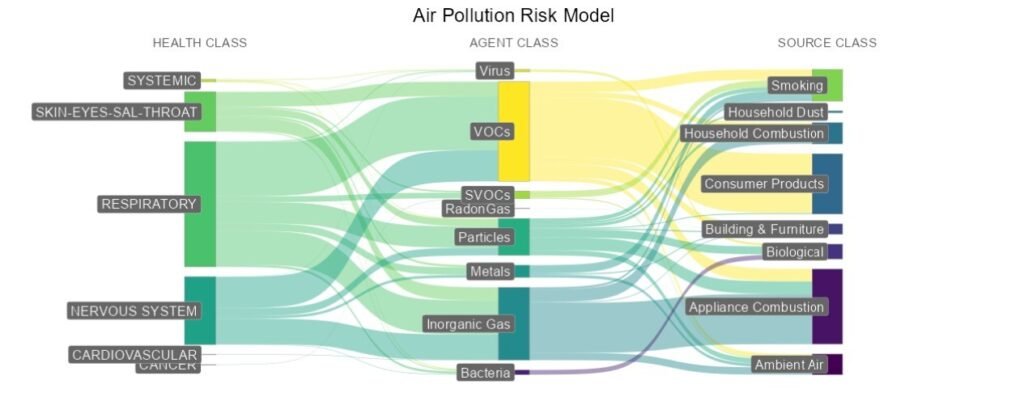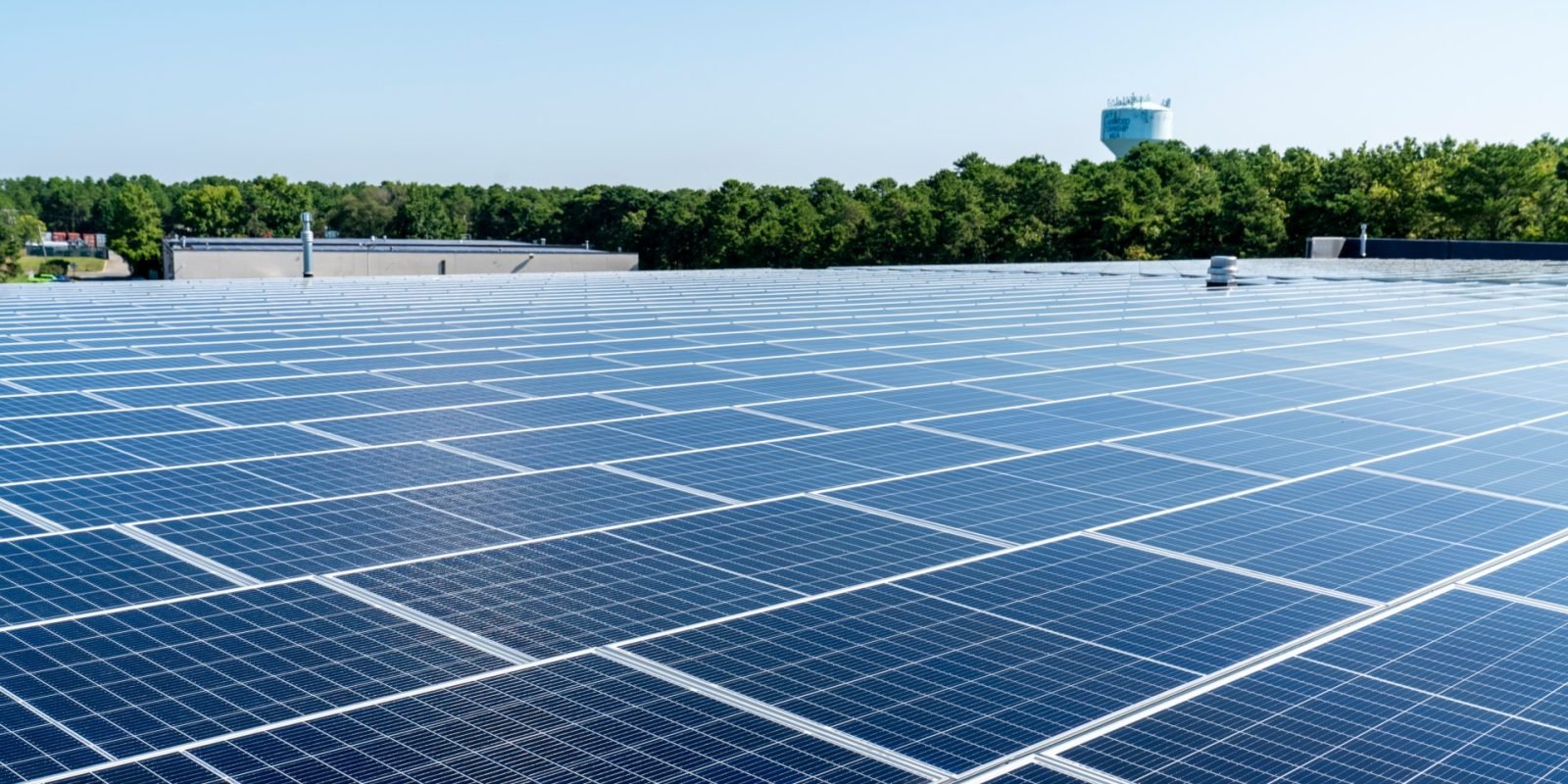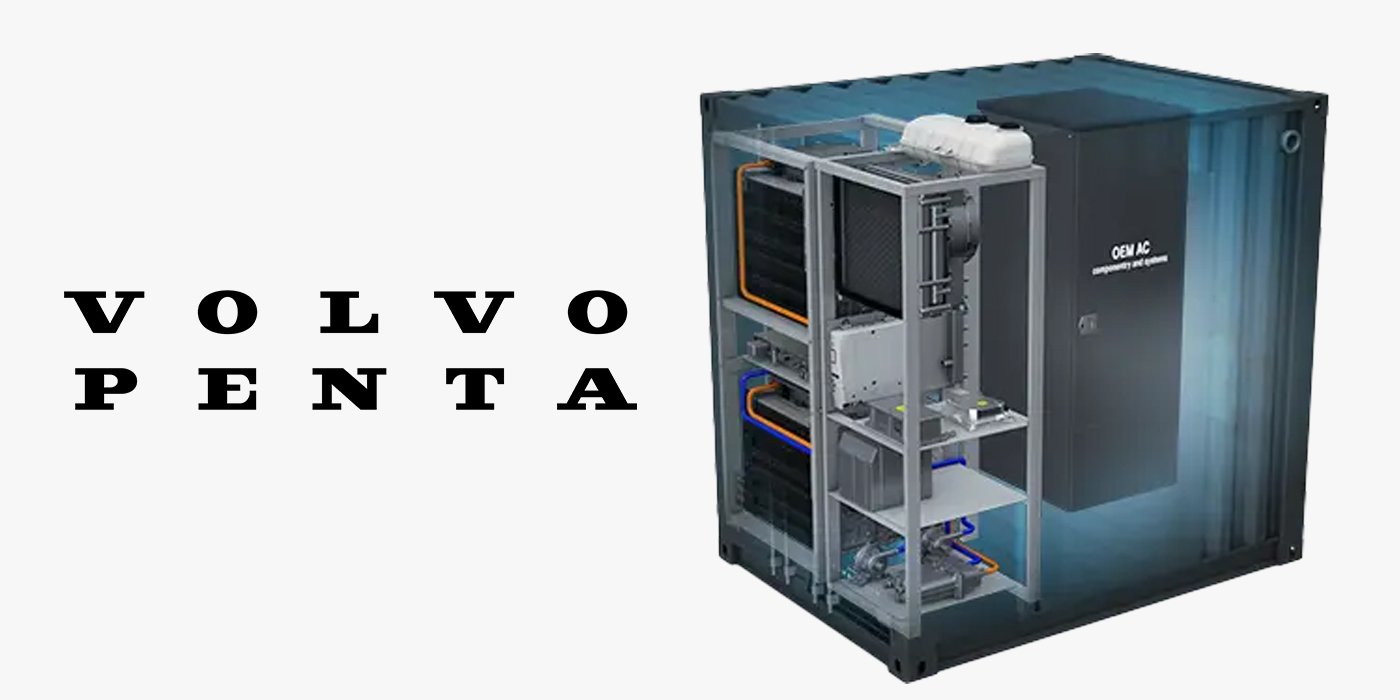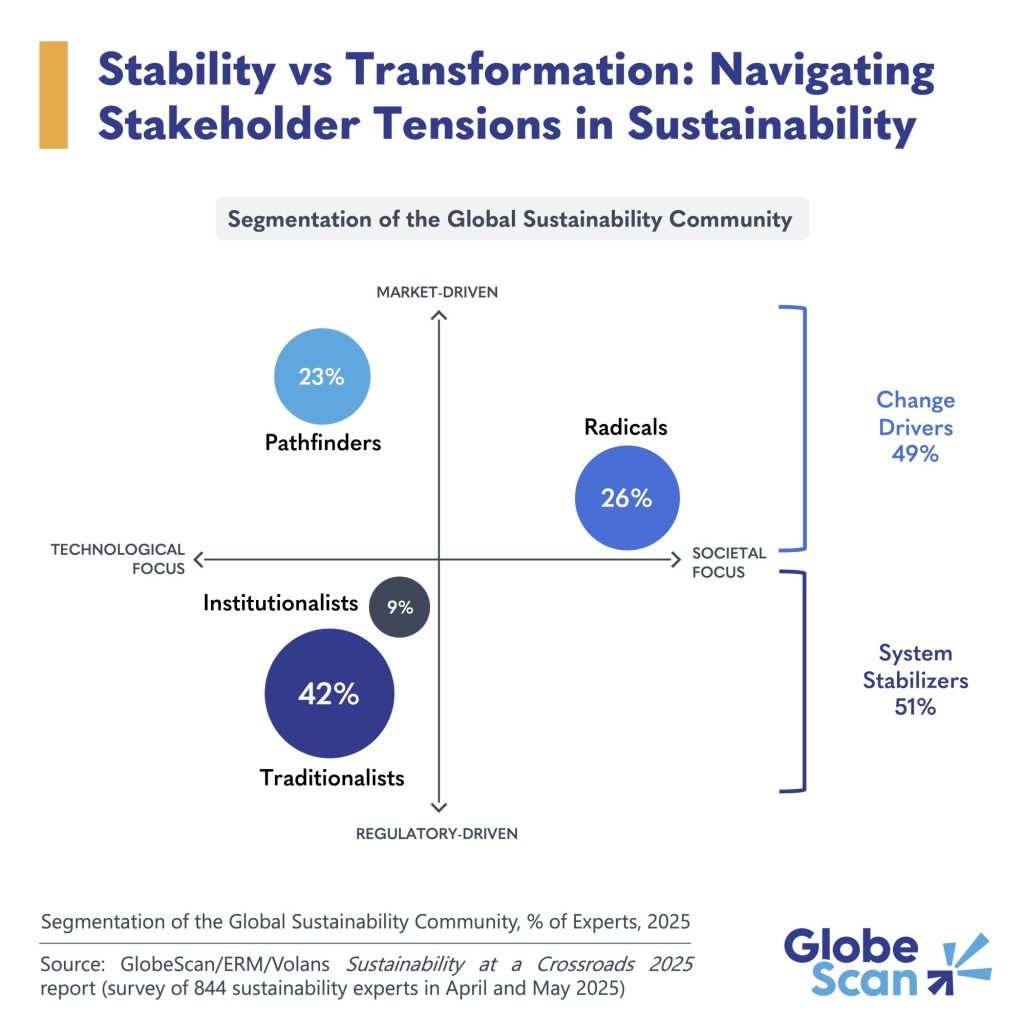Webinar: Inside-the-box connectivity in automotive applications

Join this webinar at next week’s Virtual Conference, presented by TTI and Molex, where we will explore Molex solutions designed for non-safety-critical, inside-the-box automotive applications. Learn how Micro-Fit, Micro-Lock Plus, and Pico-Clasp connectors deliver reliable, space-saving, and high-performance connectivity to meet the evolving demands of modern vehicles. Inside-the-Box Basics: Learn about connectors for internal automotive modules focused on reliability and ruggedness, without stringent standards like USCAR & LV214. Product Highlights: Discover features of Micro-Fit, Micro-Lock Plus, and Pico-Clasp connectors, designed for compact, durable, efficient use. Application Insights: See how these connectors improve lighting, HUDs, smart mirrors, and infotainment with space-saving designs. September 17, 2025, 11:45 am EDTRegister now—it’s free! See the complete session list for the Virtual Conference on EV Engineering here. Broadcast live from September 15 to 18, 2025, the conference content will encompass the entire EV engineering supply chain and ecosystem, including motor and power electronics design and manufacturing, cell development, battery systems, testing, powertrains, thermal management, circuit protection, wire and cable, EMI/EMC and more.
Tesla China posts strongest registrations of Q3 so far with first Model Y L deliveries

Tesla posted 14,300 insurance registrations in China during the week of September 1–7, a 14.4% increase from the previous week’s 12,500 units. The figure marks Tesla’s highest weekly performance so far this quarter so far, despite the company’s year-over-year figures still being below 2024’s numbers. Weekly registrations The week’s registrations broke down to 5,000 Model 3s and 8,400 Model Ys, including the first 900 units of the newly launched Model Y L variant, as per estimates from industry watchers. On a quarterly basis, Tesla China is tracking 41.3% growth compared to the previous quarter, which bodes well for the company’s results this Q3 2025. For the month of August, Tesla sold 57,152 vehicles in China, down 9.93% from the same period in 2024 but up 40.7% from July’s 40,617 units, according to the China Passenger Car Association (CPCA). Year-to-date, Tesla’s China sales are 7.2% lower compared to the previous year. For the week of September 1-7, China reported 14.3k insurance registrations for Tesla. The week is up 14.4% from last week and -11.7% year-over-year. The quarter is +41.3% QoQ and -12.1% YoY. This quarter is -19.8% vs. 24Q4 the best quarter after 10 weeks. YTD is at -7.2%… pic.twitter.com/Rf346y6zbx — Roland Pircher (@piloly) September 9, 2025 Tesla China delivered the first 0.9k Model Y L to customers last week. The remaining deliveries were 5k Model 3s and 8.4k Model Ys. pic.twitter.com/3sssZLZrHB — Roland Pircher (@piloly) September 9, 2025 Model Y L first deliveries The week ending September 7 was the first week that included the newly released Model Y L, a six-seat extended wheelbase version of the company’s best-selling all-electric crossover. Industry watchers estimate that last week, the first 900 units of the Model Y L have been registered, though this number is expected to increase in the coming weeks as deliveries of the vehicle hit their pace. Citing information from a Tesla store in Beijing, Chinese media outlet Cailianshe stated that the Model Y L has been seeing a lot of interest among car buyers. “(The Model Y L) is selling very well. Since its launch, 120,000 orders have been received, with nearly 10,000 orders placed every day. The first batch of customers began receiving deliveries in the past two days,” a Tesla representative stated. The post Tesla China posts strongest registrations of Q3 so far with first Model Y L deliveries appeared first on TESLARATI.
Fine-Tuning the Factory: A Simulation App Helps Optimize an Additive Manufacturing Facility

Additive manufacturing (AM) processes, such as metal powder bed fusion, can provide rapid and customizable production of high-quality components. Britain’s Manufacturing Technology Centre, along with partners in the aerospace sector, has built an on-site powder bed fusion facility — and also developed a simulation model and app to help factory staff make informed decisions about its operation. By Alan PetrilloHistory teaches that the Industrial Revolution began in England in the mid-18th century. While that era of sooty foundries and mills is long past, manufacturing remains essential — and challenging. One promising way to meet modern industrial challenges is by using additive manufacturing (AM) processes, such as powder bed fusion and other emerging techniques. To fulfill its promise of rapid, precise, and customizable production, AM demands more than just a retooling of factory equipment; it also calls for new approaches to factory operation and management. Figure 1. An 1873 illustration of coal mines and iron works in England’s West Midlands. As one of the world’s first industrialized regions, part of this area became known as “the Black Country” for its soot-covered landscape. Image in the public domain via Wikimedia Commons. That is why Britain’s Manufacturing Technology Centre (MTC) has enhanced its in-house metal powder bed fusion AM facility with a simulation model and app to help factory staff make informed decisions about its operation. The app, built using the Application Builder in the COMSOL Multiphysics® software, shows the potential for pairing a full-scale AM factory with a so-called “digital twin” of itself. “The model helps predict how heat and humidity inside a powder bed fusion factory may affect product quality and worker safety,” says Adam Holloway, a technology manager within the MTC’s modeling team. “When combined with data feeds from our facility, the app helps us integrate predictive modeling into day-to-day decision-making.” The MTC project demonstrates the benefits of placing simulation directly into the hands of today’s industrial workforce and shows how simulation could help shape the future of manufacturing. Additive Manufacturing for Aerospace with DRAMA To help modern British factories keep pace with the world, the MTC promotes high-value manufacturing throughout the United Kingdom. The MTC is based in the historic English industrial city of Coventry (Figure 2), but its focus is solely on the future. That is why the team has committed significant human and technical resources to its National Centre for Additive Manufacturing (NCAM). Figure 2. The headquarters of the Manufacturing Technology Centre in Coventry, England. “Adopting AM is not just about installing new equipment. Our clients are also seeking help with implementing the digital infrastructure that supports AM factory operations,” says Holloway. “Along with enterprise software and data connectivity, we’re exploring how to embed simulation within their systems as well.” The NCAM’s Digital Reconfigurable Additive Manufacturing for Aerospace (DRAMA) project provides a valuable venue for this exploration. Developed in concert with numerous manufacturers, the DRAMA initiative includes the new powder bed fusion AM facility mentioned previously. With that mini factory as DRAMA’s stage, Holloway and his fellow simulation specialists play important roles in making its production of AM aerospace components a success. Making Soft Material Add Up to Solid Objects What makes a manufacturing process “additive”, and why are so many industries exploring AM methods? In the broadest sense, an additive process is one where objects are created by adding material layer by layer, rather than removing it or molding it. A reductive or subtractive process for producing a part may, for example, begin with a solid block of metal that is then cut, drilled, and ground into shape. An additive method for making the same part, by contrast, begins with empty space! Loose or soft material is then added to that space (under carefully controlled conditions) until it forms the desired shape. That pliable material must then be solidified into a durable finished part. Figure 3. An example of a part produced through the metal powder bed fusion process. Different materials demand different methods for generating and solidifying additive forms. For example, common 3D printers sold to consumers produce objects by unspooling warm plastic filament, which bonds to itself and becomes harder as it cools. By contrast, the metal powder bed fusion process (Ref. 1) begins with, as its name suggests, a powdered metal which is then melted by applied heat and re-solidified when it cools. A part produced via the metal powder bed fusion process can be seen in Figure 3. How Heat and Humidity Affect Metal Powder Bed Fusion “The market opportunities for AM methods have been understood for a long time, but there have been many obstacles to large-scale adoption,” Holloway says. “Some of these obstacles can be overcome during the design phase of products and AM facilities. Other issues, such as the impact of environmental conditions on AM production, must be addressed while the facility is operating.” For instance, maintaining careful control of heat and humidity is an essential task for the DRAMA team. “The metal powder used for the powder bed fusion process (Figure 4) is highly sensitive to external conditions,” says Holloway. “This means it can begin to oxidize and pick up ambient moisture even while it sits in storage, and those processes will continue as it moves through the facility. Exposure to heat and moisture will change how it flows, how it melts, how it picks up an electric charge, and how it solidifies,” he says. “All of these factors can affect the resulting quality of the parts you’re producing.” Figure 4. A microscopic close-up of powdered metal grains, as used for powder bed fusion. Careless handling of powdered metal is not just a threat to product quality. It can threaten the health and safety of workers as well. “The metal powder used for AM processes is flammable and toxic, and as it dries out, it becomes even more flammable,” Holloway says. “We need to continuously measure and manage humidity levels, as well as how loose powder propagates throughout the facility.” To maintain proper atmospheric conditions, a manufacturer could augment its factory’s
Anker SOLIX C1000 Gen 2 station launches from $429, Rad Power RadWagon 4 extra battery bundle $649 off, EcoFlow flash sale, more

We’re kicking off this week’s Green Deals with the official launch of Anker’s new SOLIX C1000 Gen 2 Portable Power Station starting from $429. Right behind it we have a spotlight on Rad Power’s RadWagon 4 Cargo e-bike extra battery bundle for $1,599 that is part of the brand’s ongoing Fall Savings Sale, as well as EcoFlow’s latest 48-hour flash sale on four units, with the DELTA Pro 440W solar bundle hitting a new $1,899 low. There’s also new and returning low prices hitting EGO’s 56V 15-inch trimmer and 670 CFM blower bundle, Greenworks’ commercial-grade earth auger, and more waiting for you below. Plus, there are all the hangover deals from last week collected at the bottom of the page in our latest Electrified Weekly roundup coverage. Head below for other New Green Deals we’ve found today and, of course, Electrek’s best EV buying and leasing deals. Also, check out the new Electrek Tesla Shop for the best deals on Tesla accessories. more…
Rimac Technology debuts solid-state battery and next-gen e-axles for high-performance EVs

Rimac Technology has presented new EV battery platforms, ultra-compact powertrains, and next-generation control electronics at IAA Mobility, detailing platforms developed through collaborations with ProLogium, Mitsubishi Chemical Group and Kautex Textron. These solutions are designed for large-scale production and production-ready, according to Rimac, aiming for integration in hundreds of thousands of vehicles in the near future. Rimac’s next-generation battery system, developed with ProLogium and Mitsubishi Chemical Group, integrates solid-state cell technology and new housing solutions. Rimac notes that ProLogium’s solid-state cells paired with Mitsubishi Chemical Group’s advanced materials result in a system that is lighter, more energy-dense, and safer than previous generations. For near-term EV applications, Rimac is highlighting an “Evo Technology” battery based on 46XX Gen2 nickel manganese cobalt (NMC) cells within a thermoplastic composite housing, co-developed with Kautex Textron, featuring optimized thermal management. Rimac has designed a platform supporting both high-energy and high-power configurations using either 46XX or 2170 cell formats, with scalable, cell-to-pack architecture and integrated safety and thermal features. Rimac’s powertrain platforms include the SINTEG 300 and 550 single electric motor eAxles, which can reach over 8 kW/kg power density and more than 90 Nm/kg torque density. The patented rotor achieves speeds up to 25,000 rpm, with both coaxial and offset layouts offering output from 150 to 360 kW and torque between 2,500 and 6,250 Nm. These are targeted at a range of EV applications, from sports coupes to SUVs. Rimac is also preparing its high-torque “XXL Axle”—a dual-motor unit validated at over 11,000 Nm—to enter production in 2026 with a global automaker, offering more than 95 percent peak efficiency. In the field of electronics, Rimac also displayed a portfolio of domain and zonal electronic control units (ECUs) powered by NXP’s S32E2 processors. These units consolidate multiple traditional ECUs into high-performance domain controllers, managing tasks such as torque vectoring, battery management, and high-voltage distribution. The architecture is designed around centralized software-defined vehicle principles, supporting real-time operation, over-the-air updates and advanced safety requirements. All newly unveiled technologies will be produced at Rimac’s Croatian manufacturing facilities, which consist of over 95,000 square meters of space across two sites, including its flagship campus. “What we’re showcasing at IAA represents the convergence of breakthrough innovation and production readiness. These aren’t simply concept technologies; they’ve been developed to be production-ready solutions that will power hundreds of thousands of vehicles in the coming years,” said Nurdin Pitarević, COO, Rimac Technology. Source: Rimac Technology
Neuralink expands beyond US with breakthrough brain chip implants in Canada

Two Canadian men with spinal cord injuries have become the first patients outside the United States to receive Neuralink brain implants, Toronto’s University Health Network (UHN) confirmed this week. The operations mark Neuralink’s first international expansion of its clinical trial program. A new step in Neuralink’s trials The surgeries were performed at Toronto Western Hospital. The two patients, both in their early 30s from Ontario and Alberta, underwent the procedures on August 27 and September 3 under the leadership of neurosurgeon Dr. Andres Lozano. Both patients were implanted with Neuralink’s first device, Telepathy, which allows users to interact with tech devices using only their thoughts. Lozano noted that the effects were visible almost immediately. “The first patient was able to control a cursor by just thinking within minutes. It is extremely rapid. The signals are decoded and the artificial intelligence reads the signals and then translates them into movement on the cursor,” he said. “They just think about it and it happens.” Both men were discharged the day after surgery, as noted in a CBC report. We just completed two surgeries in Canada—our first procedures outside the United States!This marks an important step towards bringing our technology to more people around the world. pic.twitter.com/66q8s68TxK — Neuralink (@neuralink) September 4, 2025 Clinical trials, safety, and quality of life The Canadian patients will be monitored for at least a year, with the research team permitted to enroll up to four additional participants with either spinal cord injuries or Amyotrophic Lateral Sclerosis (ALS). The trial will focus on safety and quality-of-life improvements, and doctors will be watching for potential side effects such as seizures, infections, or strokes. Over the coming months, the patients are expected to advance from moving a cursor to typing on a virtual keyboard using only their thoughts. “It’s really as a preliminary step to see whether this should be scaled and rolled out to a larger population. The device right now is a cursor, but in the future you could drive a car, you could drive your wheelchair, you could drive a robot,” Lozano stated. The post Neuralink expands beyond US with breakthrough brain chip implants in Canada appeared first on TESLARATI.
Tesla China sales rise 48% quarter over quarter in August

Tesla China’s retail sales showed a rebound in August, rising 48.1% compared to May, the second month of the previous quarter, and 41% compared to July 2025. The automaker sold 57,152 vehicles locally, as per data from the China Passenger Car Association (CPCA), while Giga Shanghai sold 83,192 units wholesale during the month. Tesla’s wholesale deliveries August 2025 marked Tesla China’s best wholesale month of 2025 so far. Giga Shanghai recorded 83,192 wholesale units in August, up 22.6% from July’s 67,886 units. Of these, 24,304 were Model 3 sedans and 58,888 were Model Ys, with 26,040 vehicles exported. The Model Y remained Tesla’s standout product in China, accounting for 69% of local sales and ranking as the country’s second best-selling vehicle. The brand itself was ninth among all automakers in August, which is impressive considering the company’s BEV-only lineup. China reported 57,152 Tesla sales and 2.9% market share in August. BEV penetration reaches new record of 34.4% and Tesla has 8.3% of this segment. • Market share is 18 basis points or 7% above the 3-month trailing average of 2.7%• Tesla 9th best-selling brand• Model Y… pic.twitter.com/TpZDUwbfOB — Roland Pircher (@piloly) September 8, 2025 Tesla sold 57,152 cars in China in August. This is -10.0% year-over-year and +48.1% quarter-over-quarter compared to May. pic.twitter.com/u0Yq93WcIC — Roland Pircher (@piloly) September 8, 2025 In August, Giga Shanghai sold 83,192 cars in total, of which 24,304 were Model 3s and 58,888 were Model Ys. A total of 26,040 cars were exported. pic.twitter.com/2XpCWHW5c5 — Roland Pircher (@piloly) September 8, 2025 Balancing growth against year-over-year declines While August showed strong sequential gains, Tesla’s sales in China remain 10% lower compared to the same month last year. Year-to-date, Tesla is also down 7% against 2024 levels. That being said, over the past three months, sales have grown 12.6% compared to March through May, highlighting improved momentum in the second half of the year, as per industry estimates. A notable portion of this momentum could very well be attributed to the introduction of the Tesla Model Y L, an extended wheelbase six-seat version of the Model Y, which also happens to be the company’s best-selling vehicle. The Model Y L’s domestic deliveries in China are already starting, so it would be interesting to see where the company’s results are in the final month of the third quarter. The post Tesla China sales rise 48% quarter over quarter in August appeared first on TESLARATI.
CLYR to develop simulation engine for NIEHS education platform

CLYR.ai Risk Modeling CLYR, an air quality and environmental health technology company, announced it will develop the core environmental simulation engine for an educational platform funded by the National Institute of Environmental Health Sciences (NIEHS). The project, in partnership with dfusion, Inc., received a Phase II Small Business Innovation Research (SBIR) grant to support the development of the S3E (Simulation for Environmental Exposure Education) platform. CLYR.ai Concept S3E is a game-based learning platform designed to enhance environmental health literacy among middle school students by focusing on indoor air quality. CLYR will build the real-time computer simulations of pollutant exposure and associated health risks that will power the game. These simulations will allow students to explore how daily activities and home environments impact their health and learn scientific methods to reduce or eliminate potential hazards. CLYR.ai Application The S3E project expands CLYR’s expertise in quantitative modeling and health risk assessment for environmental hazards. The simulation technologies being developed are closely related to the advanced AI systems CLYR is building for its consumer and industrial products, which aim to provide households and businesses with precise, personalized guidance to mitigate disease risks from environmental exposures. For more information, visit clyr.ai. The post CLYR to develop simulation engine for NIEHS education platform appeared first on Engineering.com.
Solar growth surges, but Trump roadblocks put 55 GW at risk

The US solar industry put nearly 18 gigawatts (GW) of new capacity on the grid in the first half of 2025. Even as the Trump administration rolled out anti-clean energy policies, solar and storage still made up 82% of all new power added to the grid in the first six months of the year. But the growth picture isn’t as sunny as it looks, according to the SEIA. more…
ROHM and Schaeffler begin mass production of high-voltage SiC inverter brick for EVs

ROHM and Schaeffler have announced the start of mass production for a new high-voltage inverter brick featuring ROHM’s silicon carbide (SiC) metal-oxide-semiconductor field-effect transistor (MOSFET) bare chips. Schaeffler says the device is designed for a major Chinese electric EV manufacturer. The inverter brick supports battery voltages significantly greater than the typical 800 V standard and can deliver root mean square (RMS) currents up to 650 A. These capabilities enable a more compact but powerful power electronics module. According to ROHM, the inverter brick’s modular and scalable design is central to its easy integration into a variety of inverter architectures, supporting rapid deployment in vehicle platforms using so-called X-in-1 powertrain approaches. The brick integrates a power module for pulse width modulation, a DC link capacitor, DC link and integrated cooling. Additionally, it features a DC boost function, which allows vehicles with 800-volt systems to charge at 400-volt charging stations while maintaining the higher charging speed associated with 800-volt infrastructure. ROHM notes that its fourth-generation SiC technology substantially improves efficiency and performance for EVs, strengthening the role of silicon carbide power semiconductors in modern automotive applications. The partnership between Schaeffler and ROHM, established in 2020, aims to secure improved capacity and supply of energy-efficient SiC power semiconductors. Source: ROHM
SpaceX Starship launches face pushback in Florida over noise, flights—and nudists

The Federal Aviation Administration (FAA) has wrapped up a series of public hearings on SpaceX’s proposal to launch its Super Heavy Starship rocket from NASA’s Kennedy Space Center (KSC). The sessions, held both in-person and online, form part of the draft environmental impact statement (EIS) review that will determine whether SpaceX would be cleared to conduct Starship launches and landings from Florida’s Space Coast. FAA review and Starship launch plans According to the FAA’s draft EIS, SpaceX seeks permission to fly its fully reusable Starship system from Launch Complex 39A, where construction of a dedicated tower and infrastructure has already begun. Proposed operations could involve landings at KSC or droneships positioned across the Atlantic, Pacific, and Indian Oceans. The FAA emphasized that final approval is not guaranteed with the completion of the EIS, as safety and financial requirements must still be met, as noted in a Space.com report. Starship’s larger scale compared to Falcon 9 means expanded exclusion zones for air, sea, and beach access. The analysis also projected more than 60 annual closures of Playalinda Beach, alongside potential flight delays across Florida airports lasting 40 minutes to two hours. Port Canaveral would also be affected by maritime restrictions. Space Launch Complex 37 has a storied history in spaceflight, and will soon be part of launching Starship from Florida pic.twitter.com/cFQnUZXNYT — SpaceX (@SpaceX) August 26, 2025 Local concerns Public comments reflected a mix of optimism and unease. Aviation officials, such as Tampa International Airport COO John Tiliacos, warned of significant disruption to commercial flights. “There is the potential that there’s going to be significant impact to commercial aviation and the traveling public. That’s something that certainly the FAA needs to give consideration to and, frankly, come up with a plan to mitigate,” he stated. Others raised health concerns, noting that chronic sleep disruption from launch noise could impact veterans and trauma survivors. Robyn Memphis, a neuroscience and psychology graduate student, stated that sleep disruptions from launch noise and sonic booms could carry lasting effects. “Chronic sleep disruption is not just inconvenient. This is directly linked to depression, anxiety… cardiovascular disease, even suicide risk. And being in Florida, we have many veterans and trauma survivors in the community,” she said. I did not expect nudists to come out in droves during the FAA's Florida Starship public comment meeting tonight… wow!Who knew protecting nudity on Playa Linda was a thing? I had no idea it was even a nude beach, but these people do NOT want access reduced because of Starship — Ellie in Space (@esherifftv) September 4, 2025 Nudist protests and responses Erich Schuttauf, the executive director of the American Association for Nude Recreation, also argued that places like Playalinda Beach, a nudist beach, are crucial for people who travel to places where public nudity is legal. His sentiments were echoed by fellow nudist Sue Stevens, who noted that “It’s probably a quarter million people that travel and think like I do, who look for destinations that are beautiful and surrounded by like-minded people.” Photographer Max West, who plans to move to Florida to photograph Starship, noted that the spacecraft presents a notable step forward for humanity. And while its impact to communities is not marginal, the progress it offers is well worth it. “I’m not going to say that there is zero environmental impact there,” he said, though he also stated that there has to be some “little sacrifices along the way. “The turtles and the nudists will have to migrate. That’s the cost that you have to pay for this incredible stuff that’s happening.” The post SpaceX Starship launches face pushback in Florida over noise, flights—and nudists appeared first on TESLARATI.
GE Aerospace teams with Beta Technologies on hybrid electric plane engines

BETA’s A250 eVTOL takes flight at company headquarters in Vermont. Image: Beta Technologies Inc.] GE Aerospace and South Burlington, Vermont-based Beta Technologies Inc. have struck a strategic partnership to accelerate the development of a hybrid electric turbogenerator for advanced air mobility (AAM). Applications include long-range Vertical Takeoff and Landing (VTOL) aircraft and future Beta aircraft and will combine Beta’s permanent magnet electric generators with GE Aerospace’s turbine, certification and safety expertise for large-scale manufacturing. This hybrid solution will leverage existing infrastructure and capabilities, such as GE Aerospace’s CT7 and T700 engines. As part of the deal, GE Aerospace will make an equity investment of $300 million in Beta. GE Aerospace will have the right to designate a director to join Beta’s Board. “Partnering with Beta will expand and accelerate hybrid electric technology development, meeting our customers’ needs for differentiated capabilities that provide more range, payload, and optimized engine and aircraft performance,” said GE Aerospace Chairman and CEO H. Lawrence Culp. The deal is part of GE Aerospace’s pursuit of a suite of technologies for the future of flight, including integrated hybrid electric propulsion systems and advanced new engine architectures. “We believe the industry is on the precipice of a real step change, and we’re humbled that GE Aerospace has the confidence in our team, technology, and iterative approach to innovation to partner with us. We look forward to partnering to co-develop products that will unlock the potential of hybrid electric flight, and to do it with the rigor, reliability, and safety that aviation demands,” said Kyle Clark, Beta Technologies’ Founder and CEO. Beta’s “Alia” five-passenger VTOL and conventional electric aircraft charge in less than an hour, according to Beta’s website. They are engineered for all-weather performance and have been tested to operate reliably in a wide range of environmental conditions across the U.S. and Europe. ALIA’s electric propulsion and battery systems — which are developed in-house — offers reliable, high-tempo performance, as well as a quieter sound profile than conventional aircraft. GE Aerospace and Beta also announced the two companies will collaborate to develop an additional offering for the AAM industry but offered no additional details. The post GE Aerospace teams with Beta Technologies on hybrid electric plane engines appeared first on Engineering.com.
Volvo Penta teams up with e-power to equip Boels with next-gen Battery Energy Storage Systems (BESS)

Veteran marine and industrial power solutions company Volvo Penta has joined forces with energy solutions provider e-power to build battery energy storage systems (BESS). Volvo Penta’s battery systems for energy storage will power BESS units built by e-power that can be catered to a range of applications, most notably construction rental clients like Boels Rentals in Europe. more…
OMI and Upfit UTV unveil Fusion-Drive hybrid system for off-road vehicles on Polaris Ranger 1500 platform

Upfit UTV, a Fox Factory subsidiary focused on customized off-road vehicles, has announced a collaboration with OMI, a global electric powertrain engineering company, to integrate the OMI Fusion-Drive hybrid system into the Polaris Ranger XD 1500 platform. The companies say this new system will bring significant advancements in hybrid heavy-duty utility terrain vehicles (UTVs), with commercial availability planned for the first quarter of 2026. The OMI Fusion-Drive is a hybrid powertrain designed to optimize power and efficiency in challenging off-road conditions. The system features three selectable drive modes—electric, hybrid, and combustion—enabling users to switch between power sources depending on terrain and operational requirements. The electric mode is intended to enable lower emissions and quieter operation, which the companies say addresses requirements related to footprint and noise in environmentally sensitive areas. The Fusion-Drive system also incorporates the OMI NEXUS user interface, which is aimed at increasing ease of use and adaptability for end users. OMI reports that the NEXUS UI enables operators to customize drive settings and integrate third-party devices without needing advanced technical expertise. The interface offers simple configuration between driving modes and simplifies the process of adding on additional electronics or accessories to the vehicle. These features are targeted at users seeking flexibility in off-road vehicle deployment. The Polaris Ranger XD 1500 will be the first platform to implement the Fusion-Drive hybrid system. The companies identify applications in off-road, utility, and recreational markets, with further potential for technologies such as range extender electric vehicles (REEV) and autonomous vehicles to be applied in off-road scenarios. “Fusion-Drive allows us to meet these demands without sacrificing performance,” adding, “With the OMI NEXUS UI, we empower everyday drivers with powerful, user-friendly customization tools that require no advanced technical expertise,” said Justin Smith, CEO of Upfit UTV. “The benefits make Fusion-Drive a promising direction for the future of off-road vehicles and open the door for new technologies that can be particularly useful in off-road scenarios, such as range extender electric vehicles and autonomous vehicles,” said Luis Garelli, CTO of OMI. Source: OMI
Tesla launches new Supercharger program that business owners will love

Tesla has officially launched a new Supercharger program in the United States, catering to business owners who are sure to love it. Tesla’s Supercharger Network is the world’s most expansive electric vehicle charging network, with over 70,000 locations worldwide. EV owners can also access other networks, making the charging experience well-rounded and available at nearly every location imaginable. The company is now taking things a step further by launching “Supercharger for Business,” a new way to enable fast-charging for Teslas and other EVs through stalls that are owned by you but managed by the company. Tesla Superchargers get massive nod in new study showing reliability “Purchase and install Superchargers at your business,” Tesla writes on a page on its website for the new program. “Superchargers are compatible with all electric vehicles, bringing EV drivers to your business by offering convenient, reliable charging.” There are several advantages to this program that benefit owners, customers, and employees alike. It is truly a great opportunity for everyone involved. For company owners, the presence of Superchargers is extremely beneficial for customers, as it can be a convenient way to attract people to your business. It will also provide your employees who drive EVs with a fast and convenient way to charge at work, making your business a more attractive place to work. The stalls are also customizable, and can have your company’s logo placed on the charger: For customers, they will be able to pull up to your business for a meeting or a visit and charge during their stop. EV owners know how convenient this would be. For employees, they can now fast-charge at work. It is a huge benefit to have this available. It can also be more convenient than typical chargers at offices, which usually have a lower power output and take hours to gain range. In a pinch, the Superchargers will be more convenient. Businesses also have the ability to control everything they want with the Superchargers, including pricing, while also benefiting from Tesla’s management and maintenance of the stalls: “We treat your site like we treat our sites. By providing you with a full-service package that includes network operations, preventative maintenance and driver support, we’re able to guarantee 97% uptime–the highest in the industry.” With EVs becoming more popular every year, this is something that many businesses will take advantage of to not only gain customers, but also potentially sway an employee to their company for employment. Not to mention, this is a great advertising opportunity for businesses. The post Tesla launches new Supercharger program that business owners will love appeared first on TESLARATI.
Tesla Board takes firm stance on Elon Musk’s political involvement in pay package proxy

The Tesla Board of Directors announced yesterday that it had established a new pay package for CEO Elon Musk, as it believes it is “critical” to secure his long-term commitment to the position. However, the Board made it clear about Musk’s political involvement in its proxy filing, which announced the new pay package, and it seems the company is addressing it directly. Elon Musk’s new pay plan ties trillionaire status to Tesla’s $8.5 trillion valuation The proxy announced the massive pay package, which could give Musk $1 trillion if he achieves various goals that would help Tesla grow as an automaker, energy provider, and in the Robotics and AI sectors. There are also some details about the Board’s decision, which we went over yesterday, as it felt that Musk was the right person to continue to lead Tesla for the foreseeable future. It appears that there were four primary reasons behind the decision to retain Musk with this substantial pay package. Tesla sought to secure Musk’s commitment to the company by offering him a path to increased ownership; if he were to achieve all tranches, he would hold approximately 27 percent ownership. Another was to let Musk develop the newest Master Plan, which was released last week. Additionally, there needs to be a “meaningful framework for long-term succession planning led by the Board with Musk’s active participation.” But there was one driving factor that was considered critical to Tesla: “Receive assurances that Musk’s involvement with the political sphere would wind down in a timely manner.” This is an interesting tidbit in Tesla’s proxy filing. The board says: “Ultimately, the Committee believed it to be critical to Tesla to secure Musk’s commitment to Tesla, receive assurances that Musk’s involvement with the political sphere would wind down in a timely manner.”… pic.twitter.com/uGdVESprc8 — Sawyer Merritt (@SawyerMerritt) September 5, 2025 It is far from a secret that Musk’s involvement with President Donald Trump during his election campaign and after he was voted in rubbed many people the wrong way. Musk was part of President Trump’s White House, serving as the Head of the Department of Government Efficiency (DOGE) and also acting as a Special Advisor. President Donald J. Trump purchases a Tesla on the South Lawn, Tuesday, March 11, 2025. (Official White House Photo by Molly Riley) Musk’s political involvement impacted sales, but by how much is unknown. It appears the Board is truly ready to move on from politics and focus on what matters: expanding AI, Robotics, and sustainable energy. For what it’s worth, Musk has backed away from politics significantly compared to how it was during election season. The post Tesla Board takes firm stance on Elon Musk’s political involvement in pay package proxy appeared first on TESLARATI.
4 types of stakeholder mindsets on sustainability

As with many issues, there’s a variety of perspectives on what works best to advance sustainability. In a segmentation analysis, Trellis data partner GlobeScan, in collaboration with ERM and Volans, identifies four distinct mindsets that shape how stakeholders engage with the sustainability agenda. Based on expert ratings of different actions to drive positive impact, the analysis identifies groups with shared perspectives on what works best to keep sustainability moving forward: Traditionalists (42 percent) favor incremental progress through regulatory and compliance-focused approaches Radicals (26 percent) advocate for deep, justice-driven change led by activism and social mobilization Pathfinders (23 percent) support ambitious sustainability progress grounded in innovation, technology and market-based solutions Institutionalists (9 percent) prefer technocratic solutions and maintaining the existing system. What this means The coexistence of these divergent perspectives — split between system-preserving and transformation-driven mindsets — presents a complex challenge for business leaders. While traditionalists value continuity and compliance, radicals push for bold, justice-centered transformation. Pathfinders and institutionalists occupy the middle ground, balancing ambition with pragmatism. To succeed in this fragmented landscape, companies must embrace a “yes, and” mindset — one that reconciles system stability with transformation, compliance with innovation and equity with efficiency. As stakeholder expectations rise and scrutiny intensifies, integrated strategies that bridge these divides are essential to maintaining legitimacy, managing reputational risk and demonstrating credible leadership. Based on a survey of 844 sustainability practitioners across 72 countries who were asked to use a 5-point scale to rate how likely certain actions would lead to positive sustainability outcomes over the next five years. Conducted April-May 2025. The post 4 types of stakeholder mindsets on sustainability appeared first on Trellis.
Artec 3D launches Studio 20 with new automation features

Artec 3D has released its latest 3D data capture and processing software, Artec Studio 20 (AS20). The software, which supports 3D scanning, photogrammetry, reverse engineering, and quality inspection, now includes new Workflows that enable faster, automated, and customizable data processing pipelines for tasks such as digitization, design iteration, and product analysis. Users also benefit from upgrades across the Artec scanner range. Capture with Artec Spider II is more efficient thanks to Live Scan Decimation, which delivers high-detail, lightweight models, ideal for rapid prototyping and 3D modeling. Artec Micro II, meanwhile, has been enhanced with support for HD Mode and 3-axis scanning, allowing it to reach an even higher resolution and deliver more complete scans of small objects for reverse engineering and inspection. Refined masking in AI Photogrammetry improves 3D model accuracy, reducing the need for manual editing in applications such as CGI, VFX, and forensics. These updates support more efficient digital twin capture in Artec Studio. Tailored workflows for fast, repeatable results Workflows in Artec Studio can be customized to users’ specific application needs. Simply queue algorithms and hit “run” to go from captured data to a 3D model in one click. Workflow automation makes data processing up to 70% faster, while freeing up users to complete other tasks. In Artec Studio, parameters can still be adjusted for different datasets, but settings no longer need to be reconfigured each time. The new Workflows feature supports repeat tasks by reducing errors, improving process consistency, and helping users achieve reliable results. Users with an annual subscription can use scripting to set up workflows that import, process, and export data to third-party software. This integration supports batch processing, reduces manual interaction, and enables faster handling of similar datasets through automated file transfer. Upgraded Artec 3D scanning performance Artec Studio releases annual updates with new features, and the 20th edition follows the same approach. Artec Studio 20 introduces several upgrades, including Real-time Fusion for Artec Spider II. Previously available only on Artec Leo, this algorithm provides more detailed live previews to support reliable data capture. To help users turn high-resolution data captured by Spider II into lightweight 3D models, Live Scan Decimation has been introduced for easier processing, yet still highly accurate results. The newly integrated Autopilot further streamlines these steps – especially for new users. Improved Reconstruction also delivers more complete datasets for realistic, watertight models with applications in heritage preservation, education & medical, where detail capture is key. Artec Micro II, a desktop solution for digitizing small objects in a single click, benefits from its own series of enhancements. With HD Mode, users can now boost fine-detail capture, picking up 4x more data points with each scan. In addition to better overall resolution, Micro II delivers greater surface coverage thanks to its 3-axis integration. Moving on a third axis allows Micro II to capture even the most complex, obscured areas and recreate objects in their entirety. The performance of Artec 3D’s first industrial laser scanner, Artec Point, has been upgraded with better visualization for 2x faster data capture and a more intuitive scanning experience. Other devices like the wireless Artec Leo and long-range Artec Ray II also benefit from wider improvements, including a Fusion setting redesign and workflow automation. With the newly updated app, Ray II users can access Street View, all-new Panoramas & more. Next-level photogrammetry, powered by AI Now on the market for over a year, AI Photogrammetry continues to go from strength to strength. Refined masking in Artec Studio 20 allows for realistic, artifact-free 3D models, while masking for texturing prevents objects from blurring with their background. Multi-camera support expedites photogrammetry data capture – as well as opening the software to different hardware combinations – whether it be drones, smartphones, handycams, or DSLR cameras. By activating sharp image prioritization, users can also ensure that only the best possible frames are chosen from uploaded photos or videos for maximum realism. Moreover, GPU Memory Optimization customizes settings to each user’s individual hardware needs to make sure that AI Photogrammetry reconstructs models with peak efficiency. Improved integration and an intuitive UI Better integration with third-party software makes Artec Studio 20 more effective across applications. ZEISS Inspect advanced analysis tools are now easier to access thanks to a new interface that makes export straightforward and allows for scripting automation. Enhanced USD file support enhances the software’s functionality for CGI & VFX users – RCP file support has also been added, bringing compatibility with popular BIM platforms like Autodesk Revit. With distance and intensity export filters, users can now optimize data for downstream processing, too. Finally, Artec Studio 20 features several UI improvements, including enhanced tools and scanning panels designed for more intuitive navigation and control. Artec Studio 20 is available now. For more information, visit artec3d.com. The post Artec 3D launches Studio 20 with new automation features appeared first on Engineering.com.

